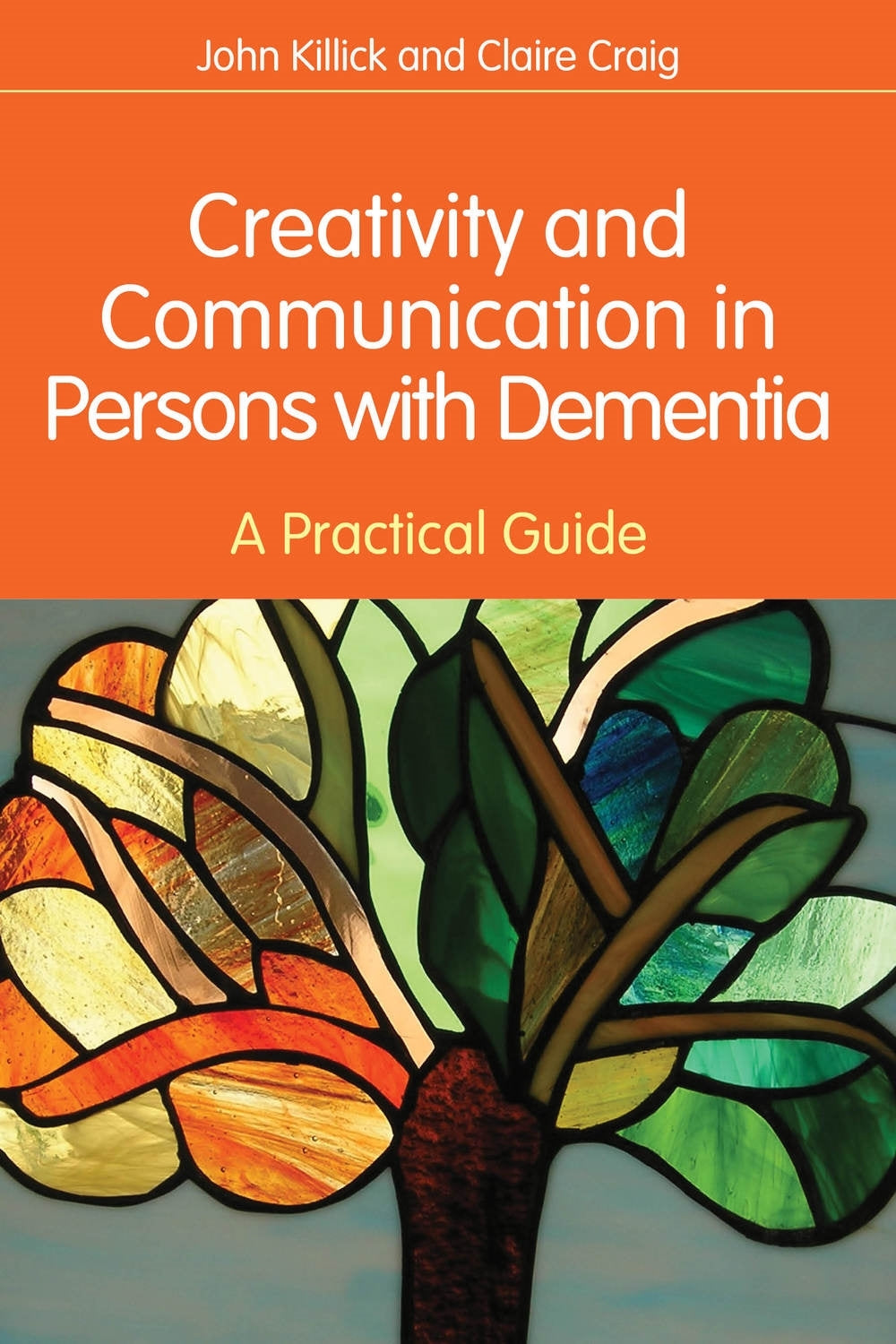
Press Reviews
Ageing and Society
Killick and Craig must be applauded for their truly inspirational practical guide on Creativity and Communication in Persons with Dementia. This book is a true celebration of the power of the arts for people living with dementia and is drawn on the authors' own experiences and wisdom.
Journal of Ageing & Society
Killick and Craig must be applauded for their truly inspirational practical guide on Creativity and Communication in Persons with Dementia. This book is a true celebration of the power of the arts for people living with dementia and is drawn on the authors' own experiences and wisdom. Killick and Craig assert that whilst there has been significant financial investment in biomedical research, the care of people living with dementia has been notably overlooked, to the detriment of wellbeing and affirmation of identity and self-esteem. This book attempts to redress this imbalance and is aimed at anyone (with any level of artistic talent!) with an interest in working alongside people living with dementia in a creative capacity, be they practitioners, volunteers, family members or researchers.
Signpost
It is refreshing to have a book written where the outlook is of dementia having few barriers of boundaries on creativity... I find this book an inspirational read; it presents a wealth of ideas, suggestions, guidance and experience in the field of creativity and dementia. Most importantly it demonstrates how persons with dementia and those around them can gain from engaging in creativity activity.
Plus - Christian Council on Ageing
Whatever John Killick writes concerning dementia is eminently worth reading, perhaps even more so when he co-authors a book with another expert in the field... The present publication (...) will be invaluable for activities organisers in care homes and community-based projects, and of considerable interest to anyone caring for a person with dementia... The book is both insightful and practical
Caring Times
We can be sure that any book with John Killlick as author or co-author is going to be good. Not just good but inspirational. Killick sparks the creativity in all of us and care homes can be such lively places with people exploring a wide variety of creative activities: music, dance, poetry, drama, storytelling, painting, ceramics, sculpture, textiles, photography. All of these and others are offered by the authors. Just wonderful stuff: exciting, imaginative, and practical.
Mary Marshall, Professor Emeritus, University of Stirling
This charming, erudite book presents a wealth of experience about the arts and dementia in a readable and helpful form. The two authors are acknowledged experts with long experience of using a wide range of arts in this field. The book is therefore well grounded in practice and full of inspirational stories. It is also a treasure trove of ideas, suggestions and helpful guidance.
James Mckillop MBE, founding member of the Scottish Dementia Working Group
This book left me speechless. For years, after being diagnosed with dementia, I moaned that not enough attention is paid to creativity in dementia. Little did I know, a work was in progress. As said inside, it is not meant to be comprehensive, but it covers a lot of ground. I couldn't put it down. You won't either.
Maria Parsons, Director, ARTZ UK: Artists for Alzheimers
John and Claire's timely book shows why being engaged and entertained by singing, looking at paintings, taking photographs, dancing and other activities offers a bridge to joy, satisfaction and self identity for people with dementia. Brimming with ideas, research, reflection, and practice examples and woven throughout with comments and observations of people with dementia, it's an inspiring, effortless read not only for a wide range of health and social care practitioners, but, importantly, for artists and performers, whose work can help those experiencing a crisis of self, reconnect with life and living.
Dr Jayne Wallace, Senior Lecturer, School of Design, Northumbria University
This book is like the most colourful toolbox, crammed with a rich variety of materials begging to be used. John and Claire describe a magnificent mix of creative ideas, helpful insights and beautiful personal accounts from their experiences of working creatively with people living with dementia. Their enthusiasm is infectious; anyone who reads this will be inspired and excited to employ the creative strategies within. The book is about relationships; it is about developing sensitivities to be empathic, creative, opportunistic and communicative with people who have dementia and above all it is intensely human. John and Claire bring extraordinary clarity to the ways that they both work with people showing us how to gently gain empathy, use creative media and act as instruments to make tangible other people's words, meanings and feelings. The book will bring insight and inspiration to readers from any background. It will be a valuable tool to me in my continuing practice and I urge you to join me in taking John and Claire's advice, to let go of our assumptions of what we think we can achieve and to throw ourselves into these wonderful ideas.
Nursing Standard
For practitioners convinced of the value of creative activity, this book will be a valuable resource. The authors offer many thought-provoking accounts and personal insights.
Jane Buswell
The Journal of Dementia CareThere are currently many books available on communication with people experiencing dementia. This one is distinctly different, both in its approach and how it links creative thought and activities into the whole process of communication. More importantly it delivers what it say on the tin - it is 'A practical guide'. The essence of this book is not the various techniques and equipment (though these are described with admirable clarity) but how creativity and communication are fundamental to the human spirit. This book would benefit anyone working with or caring for individuals experiencing dementia, including informal carers. For health or social care professionals to whom the practical use of creativity to enhance communication is relatively new, this is a motivating and inspirational book.
